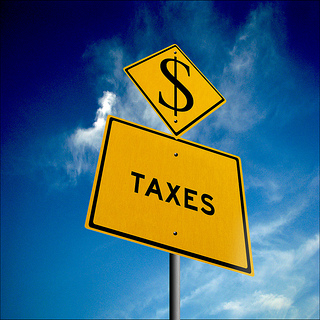AARP Hearing Center

Written By: Dave Freudenthal, Wyoming's Former Governor
The opinions expressed in this column of those of the writer and do not necessarily reflect AARP policy.
Our Founding Fathers gathered in 1889 to create a constitution for our great State. The vision for statehood was incredibly optimistic. Citing our unmatched agricultural and mineral wealth, and the incredible quality of the citizenry, the Constitutional Convention adopted a document characterized as both “…conservative and progressive….” Understanding “there are no free lunches”, a system was developed to provide the necessary public services. They were firmly convinced the citizens were prepared to bear the cost of fulfilling the vision of Wyoming.
They were not looking for federal dollars, investment income, sales taxes or particular taxes on the mineral industry to support public services.
Determined to create a “fair”, “equal” and “just” taxation plan premised on the idea that all taxpayers would bear “a just proportion” of the burden of supporting public services, the Founding Fathers constitutionalized a property tax system. All real and personal property would be taxed at fair market value (the price paid for property between a willing buyer and willing seller). Taxpayers owning more property or more valuable property would pay at the same tax rate as everyone else. Their tax bill would be higher simply because they owned more property or more valuable property.
The Constitution protected the taxpayer by imposing strict limits on the tax rates to be imposed by cities, counties, and the state. Beginning somewhere around 1900, without benefit of law or changes in the Constitution, Wyoming began to move away from valuing property at fair market value as to all property except mineral production which remained at 100 percent of fair market value. The device was the “assessment rate” meaning the fair market value for taxation purposes was reduced by some seemingly arbitrary percent. Suddenly different types of property were subjected to different effective tax payments because assessment rate applied. Personal property held for personal tax was no longer subject to taxation and agricultural land was not even valued based on fair market value. Fast forward to the 1980’s, by then, Wyoming’s tax system was a jumbled mess. Residents were subject to one assessment rate, industrial property another, commercial property yet another, etc. The idea of “equal”, “fair” and “just proportion” was gone. Except for minerals, which remained at an assessment rate of 100% of fair market value.
As to our non-mineral tax base, it may have been 80% less than what was envisioned by the Founding Fathers. The tax base for local governments had largely evaporated. So, the legislature created 27 different kinds of “special districts” which had their own taxing authority to fill the void. There may be as many as 800 special districts in Wyoming.
Eventually this structure of multiple property classifications (tiers), confusing assessment rates and variable tax payments by similar properties was challenged. In 1987, the Wyoming Supreme Court determined the entire system violated the Constitutional provisions set forth by the Founding Fathers. By then, we had come to enjoy among the most favorable taxation of any state in America. Rather than return to the original Constitutional mandate, we changed the Constitution by popular vote in 1988 to assure ourselves relatively low property taxation. The exception is mineral production which remains at fair market value.
Through a combination of mineral revenues, sales taxes, investment income from previously saved mineral revenues, federal dollars and a variety of smaller taxes and fees, Wyoming citizens pay approximately 14% of the cost of the services we enjoy (Wyoming Taxpayers Association data). A circumstance which various reports demonstrate is not sustainable in the long run.
There is a legitimate concern about rising tax payments for residential property due to the rapid increase in property values in certain parts of the state. As a result, Wyoming voters will see a proposed constitutional amendment in 2024 to create a separate property class for residential property with the option of creating an identifiable subclass. There is also a proposal afoot to reduce all residential property taxes by 50%. These proposals are driven by the admirable and appropriate goal of allowing older citizens of limited means to remain in their homes for as long as good health allows. Achieving this goal does not require a 50% tax reduction for all of us.
While appealing, such a proposition damages future generations in Wyoming and would reduce the level of services to current citizens. Local governments, school districts and special districts would find their residential property tax resources reduced by 50 percent, which means service cuts across the board. (State government revenue would not be impacted since there has not been a state property tax in the last 50 years.) The proposed Constitutional Amendment offers the opportunity, but not the assurance, for a targeted approach to help people stay in their homes. It would be folly for Wyoming to use the legitimate goal of helping people who need assistance as an excuse to further reduce the 14% burden the rest of us bear for the services we receive.































































